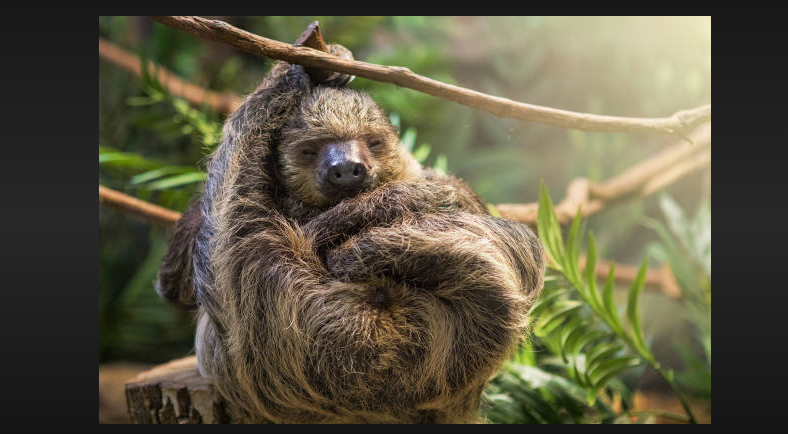"Unveiling the Sleepy Secrets of Sloths: How Much Do They Really Sleep?"
Sloths, with their leisurely pace and seemingly constant rest, have captivated the curiosity of animal enthusiasts worldwide. The question "How much does a sloth sleep?" lingers as we attempt to understand the sleeping habits of these slow-moving creatures. In this article, we will delve into the intriguing world of sloth slumber, exploring their unique sleep patterns, reasons behind their extended rest, and the fascinating adaptations that allow them to thrive in their natural habitats.

A sloth sleeping
Section 1: A Slow and Steady Lifestyle
Sloths, the icons of leisure in the animal kingdom, embody a lifestyle defined by their unhurried movements and ample rest.
These unique creatures have earned their place as symbols of patience and adaptation.
Their apparent sluggishness belies a fascinating set of biological strategies that enable them to navigate their environments effectively.
Sloths' sleep patterns stand as a testament to their evolutionary journey, allowing them to conserve energy and thrive in their specific niches within the lush canopies of tropical forests.
By examining the mysteries behind how much a sloth sleeps, we can uncover the secrets that make these creatures true marvels of nature.
Section 2: Understanding Sloth Sleep Patterns
When it comes to sleep, sloths are in a league of their own.
These arboreal mammals are known for their remarkable ability to sleep for extended periods, often ranging from 15 to 20 hours per day.
However, this extended slumber varies between two distinct species: the two-toed sloths and the three-toed sloths.
Two-toed sloths exhibit a more flexible sleep schedule, often alternating between periods of rest and activity throughout the day and night.
On the other hand, three-toed sloths tend to have more rigid sleep patterns, devoting most of their waking moments to feeding and resting, with sleep durations often exceeding 15 hours per day.
Section 3: The Remarkable Adaptations of Sloth Slumber
What sets sloth sleep apart from that of other mammals lies in their exceptional adaptations. Sloths possess incredibly low metabolic rates, which enable them to expend minimal energy.
This metabolic trait aligns perfectly with their gradual movements and long stretches of sleep, allowing them to survive on limited energy resources from their plant-based diet.
Furthermore, sloths have evolved specialized muscles that anchor them to branches even as they sleep.
This adaptation enables them to maintain their hanging posture effortlessly, conserving energy while they rest.
The synergy of these adaptations allows sloths to maximize their energy conservation, adapting perfectly to their unique arboreal lifestyle.
Section 4: The Role of Diet in Sloth Sleep
A sloth's diet plays a significant role in its sleep patterns.
The herbivorous nature of sloths, coupled with the low nutritional value of leaves, necessitates a prolonged digestion process.
As a result, sloths spend substantial time resting and sleeping to facilitate the digestion of their fibrous diet.
Because their diet doesn't provide abundant energy, sloths need to spend their waking hours conserving whatever energy they do acquire.
This is achieved through their energy-efficient lifestyle, which includes slow movements and extended periods of rest.
Section 5: The Myth of Laziness
Sloths' seemingly idle lifestyle has often led to misconceptions about their behavior.
Labeling them as "lazy" oversimplifies their intricate adaptations that serve a clear purpose in their survival.
Their extended sleep and slow movements are not signs of laziness but rather efficient strategies to navigate their complex ecosystem.

A Ssloth
Conclude by summarizing the article's insights into the sleep habits of sloths. Highlight the remarkable adaptations that enable these creatures to excel in their leisurely, energy-conserving lifestyle, showcasing the beauty of nature's diverse strategies for survival.